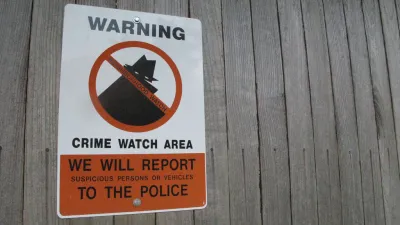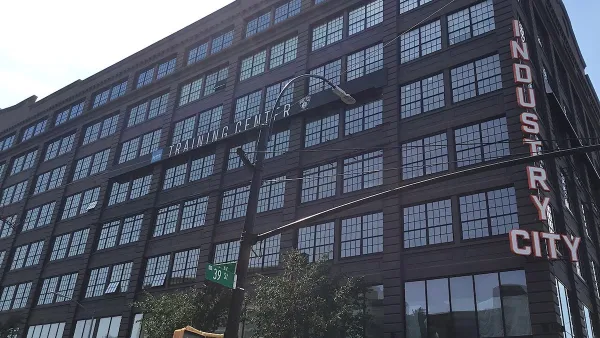Homicides are decreasing nationwide, but a federal study reveals that the rate has decreased about 17% in cities and increased by the same rate in suburbs. Two WSJ reporters look behind the numbers for the causes with a focus on Atlanta's suburbs.

Cameron Mcwhirter and Gary Fields report on the murder of an African immigrant who opened a store in a "violent area" in southwest Atlanta but was shot outside his "modest home on a quiet street" in the unincorportated are of Riverdale in Clayton County. They refer to a recent study of the federal Bureau of Justice Statistics and a May 2011 study by the Brookings Institution.
"Today, suburban murders, from domestic violence to robberies gone bad to massacres like the Newtown, Conn., school shootings, make up about a quarter of all homicides in the U.S., up from 20.7% in 2001, according to the BJS. The sharpest increases in violent crime appear to be in suburbs of cities, including those of Houston, Pittsburgh, and Atlanta. The violent-crime rate in Atlanta's suburbs rose 23% between 2000 and 2008, while the city of Atlanta's violent-crime rate dropped 49% (according to Brookings)."
Mcwhirter and Fields suggest that the increase in suburban crime are related to the demographic movement in and out of central cities.
"New suburban residents include people who moved from tough urban neighborhoods, lured in part by cheaper rents in some suburbs like Clayton County. Some were pushed out of cities like Atlanta by urban gentrification and public-housing demolition. Many hoped for less crime, but some who came were criminals."
While the media has been captivated by the increase in crime in Chicago, they have spent less time on the plummeting homicide rate in the nation's largest city.
Wendy Ruderman of the New York Times writes on Dec. 28 that "(m)urders in New York have dropped to their lowest level in over 40 years, city officials announced on Friday, even as overall crimes increased slightly because of a rise in thefts — a phenomenon based solely on robberies of iPhones and other Apple devices."
The prevalence of crime in fact may be among the most important aspects of urbanity, if not civilization.
“The essence of civilization is that you can walk down the street without having to look over your shoulder,” Mayor Michael R. Bloomberg said.
Contributor's Note: Access to article may be time-limited without subscription.
FULL STORY: Crime Migrates to Suburbs

National Parks Layoffs Will Cause Communities to Lose Billions
Thousands of essential park workers were laid off this week, just before the busy spring break season.

Retro-silient?: America’s First “Eco-burb,” The Woodlands Turns 50
A master-planned community north of Houston offers lessons on green infrastructure and resilient design, but falls short of its founder’s lofty affordability and walkability goals.

Delivering for America Plan Will Downgrade Mail Service in at Least 49.5 Percent of Zip Codes
Republican and Democrat lawmakers criticize the plan for its disproportionate negative impact on rural communities.

Test News Post 1
This is a summary

Test News Headline 46
Test for the image on the front page.

Balancing Bombs and Butterflies: How the National Guard Protects a Rare Species
The National Guard at Fort Indiantown Gap uses GIS technology and land management strategies to balance military training with conservation efforts, ensuring the survival of the rare eastern regal fritillary butterfly.
Urban Design for Planners 1: Software Tools
This six-course series explores essential urban design concepts using open source software and equips planners with the tools they need to participate fully in the urban design process.
Planning for Universal Design
Learn the tools for implementing Universal Design in planning regulations.
EMC Planning Group, Inc.
Planetizen
Planetizen
Mpact (formerly Rail~Volution)
Great Falls Development Authority, Inc.
HUDs Office of Policy Development and Research
NYU Wagner Graduate School of Public Service




























